Intelligent Systems - Research
Bioinformatics

We have applied a variety of supervised and unsupervised machine learning techniques in the context of bionformatics and systems biology. Examples include the analysis of gene expression and proteomics data and risk evaluation in cancer based on gene expression. In a recent publication we provide evidence for tissue-specific compositions of the ribosome: Nucleic Acids Research 48(13): 7079-7098, 2020.
Astroinformatics
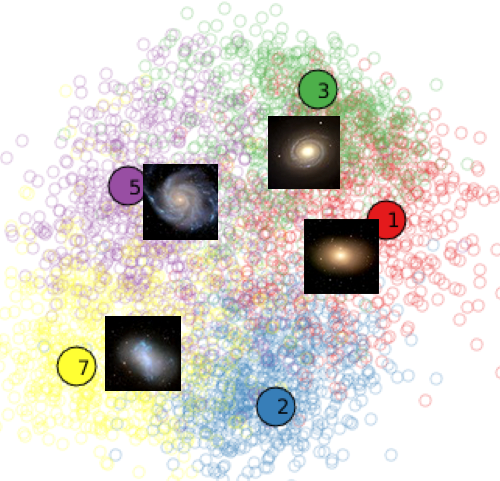
We participate in the EU H2020 ITN SUNDIAL to which we contribute by the application of machine learning to astrophysical data. Several PhD projects with the network are supervised and co-supervised by M. Biehl, K. Bunte and M. Wilkinson. Beyond SUNDIAL, we maintain several collaborations with researchers of SRON and Kapteyn Institute within the Data Science and Systems Center (DSSC).
Big data and financial modelling

We designed a method that helps a big international bank recognise automatically in an early phase who among the delayers of mortgage rate payments will default. Early recognition is important because banks need to reserve certain capital in such cases and timely arrangements with clients may reduce the overall amount. The method and its computer implementation are in use at the concerned bank since mid-2013 and led to large reduction of operation costs. [Sun et al., 2014]
Non-invasive detection of chromosomal abnormalities

In collaboration with Fetal Medicine Foundation, we use a dataset with medical examinations for fetal aneuploidy detection in the first trimester of the pregnancy. The most frequent aneuploidy is the trisomy 21 (down syndrome). In our database we have observations for the trisomies 21, 13, 18, triploidy, turner and euploid. We use ultrasonographic markers, blood analysis measurments from the mother, as well as biological measurments of both the fetus and the mother. The graphs show the values of the non-binary markers for the euploid (normal) and the trisomy 21. We use Artificial Neural Networks as a classifier. We achieved higher results with respect to sensitivity and specificity from the traditional approach that is based on linear statistics.
Smart breeding

In collaboration with the Animal Sciences department of the Wageningen University, we will apply big data analytics and advanced machine learning techniques to the genetic data of millions of cows. Our aim is to develop more sustainable and animal friendly breeding. [SmartBreed]
Outdoor garden trimming robot

Within a consortium of six universities and two companies, we acquired a Horizon 2020 grant for the TrimBot2020 project aimed to develop the first outdoor garden trimming robot.
Detection and discrimination of crop plant diseases
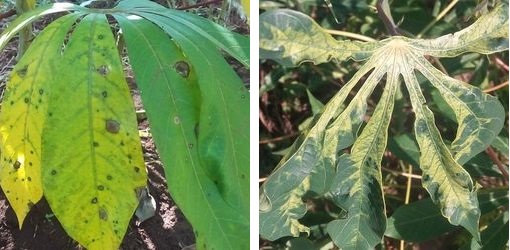
In an ongoing collaboration with John Quinn and our former PhD student Ernest Mwebaze, Makerere University Kampala/Uganda, we investigate the use of machine learning for the diagnosis and discrimination of crop plant viral diseases. The classification will be based on photographic images taken in the field and employs unconventional distance measures such as statistical divergences [Mwebaze et al.]. The long term goal is to establish a nation-wide surveillance system in Uganda. The focus is on Cassava, one of the most important crop plants in the region. Ernest Mwebaze acquired a major fund from the Melinda and Bill Gates foundation for the project, see the website of the Makerere University AI LAB for further information.
Insert detection and identification of broken cutting edges

The identification of broken and worn cutting tools in a milling machine is an important application as they can cause a decay of the quality of the final manufactured product or a breakage of the milling machine itself. We propose effective algorithms for the localization of inserts in edge profile milling heads and the identification of broken cutting edges, [Fernández-Robles et al. 2015].
Hollistic descriptors for robot relocalization and loop closure

Place recognition plays a key role in mobile robotics. The difficulty of recognizing a revisited location increases with appearance changes caused by weather, illumination or pose variations, which hinders the long-term performance of such algorithms in real environments. We train a convolutional neural network (CNN) to map images to a low dimensional space where descriptors from images of the same locations map to nearby points, despite differences in visual appearance. In order for the network to learn the desired invariances, we train it with triplets of images selected from datasets which present a challenging variability in visual appearance.
Biomarkers in medical diagnosis
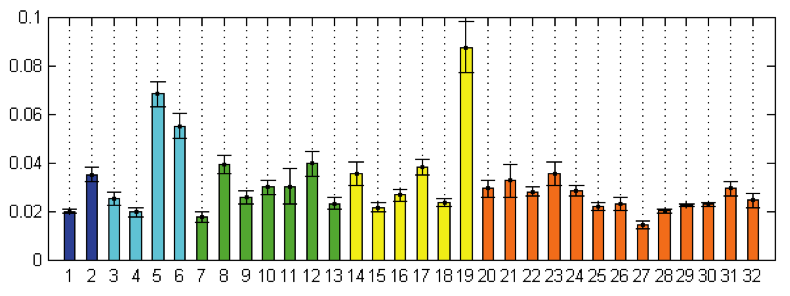
In close collaboration with medical researchers we analyse medical datasets with the aim of identifying relevant bio-markers for the diagnosis and discrimination of various disorders. Two examples for this line of interdisciplinary research:
GMLVQ was applied to the classification of adrenal
tumors on the basis of steroid metabolomics data in a successful
collaboration with W. Arlt at the
Medical School of the University of Birmingham/UK. The on-going project
is currently being extended with respect to other disorders and the detection of
cancer recurrences.
[Arlt et al., 2011]
The early diagnosis of Rheumatoid Arthritis is the long term goal
of a collaboration with D. Scheel-Toellner from the Institute of Inflammation
and Ageing, also at the Univ. of Birmingham/UK. Our results triggered new basic
research which led to a better understanding of early stages of Arthritis.
[Yeo et al., 2015]
Automated diagnostics for dermatology
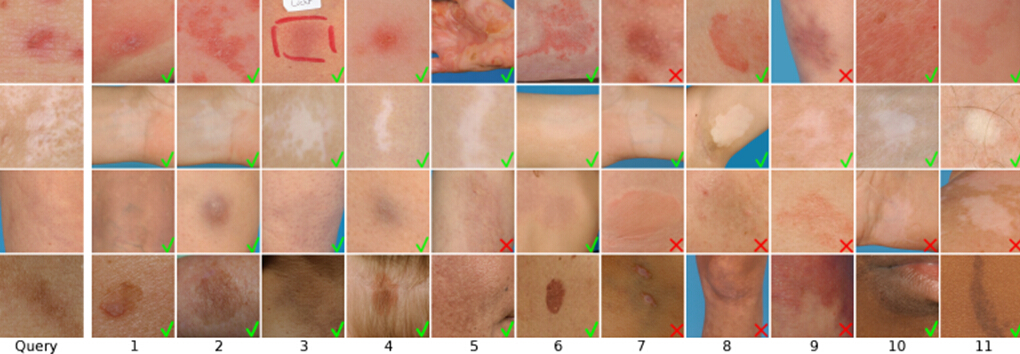
In a joint project with the Department of Dermatology of the University Medical Center Groningen (UMCG) and the Netherlands Association for Dermatology and Vennerology we develop an automatic diagnosis support system that deploys content-based image retrieval and other intelligent systems techniques. [Giotis et al., 2013, 2015]
Classification of serrated patterns in DIF images

The classification of serrated patterns in direct immunofluorescence images is used for the diagnosis of epidermolysis bullosa acquisita, a subepidermal autoimmune blistering disease of the skin. Together with the Department of Dermatology of the UMCG, we developed an automatic method to classify serrated patterns as u- or n-shaped. It achieves correct classification rate (85%) that is comparable with that of dermatologists who were trained to do this task. [Shi et al., 2015]
Pattern recognition for glaucoma screening

Glaucoma is the second-leading cause of blindness. It damages the optic nerve irreversibly and has no early symptoms. The most common clinical measure is the cup-to-disc ratio. In collaboration with the Department of Ophthalmology of the University Medical Center Groningen, we develop more comprehensive methods to be used for large-scale glaucoma screening of the population. [Guo et al., 2015]
Retinal vessel delineation
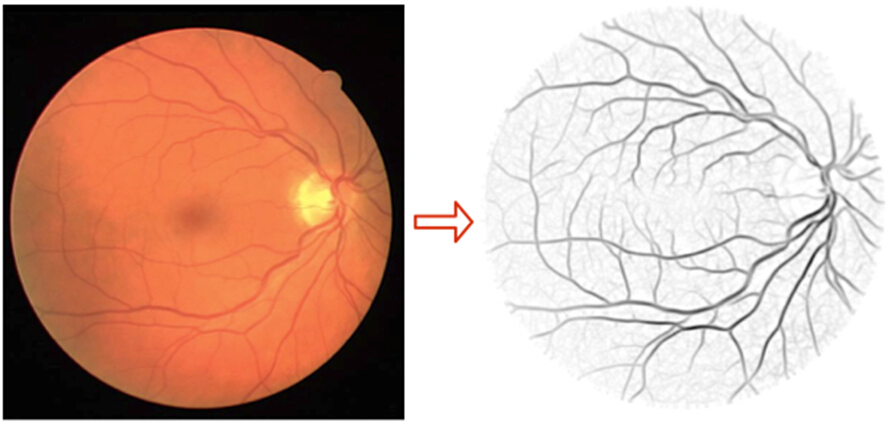
Retinal images can be used to identify early risks of certain pathologies, such as diabetic retinopathy, glaucoma, age-related macular degeneration, as well as cardiovascular diseases. The segmentation of the vessel tree is a fundamental step in the analysis of such images. We proposed effective and efficient algorithms for this task. [Azzopardi et al., 2015; Strisciuglio et al., 2015]
Detection of retinal vascular bifurcations
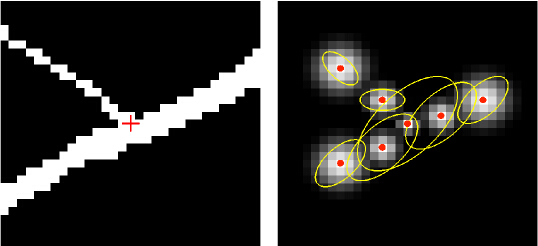
The function of a specific type of shape-slective neuron in area V4 of visual cortex gave us inspiration to develop a methodology for the construction of trainable pattern detection filters. We showed that one family of such filters is very effective in the detection of vascular bifurcations in retinal fundus images. [Azzopardi and Petkov, 2013]
Life-logging

Life-logging is the digital capture of the activities of a person through the use of electronic equipment. We use wearable portable cameras that take a few images every second and register what the wearer is doing and experiencing. In collaboration with the University of Barcelona, we develop a method for unsupervised analysis of life-logging image sequences. We also aim at defining useful applications of this new technology. One targeted application concerns patients with mild cognitive disorder. [Talavera et al., 2015]
Contour enhancement by suppression of texture

A neural mechanism in areas V1 and V2 of visual cortex, known as surround suppression or non-classical receptive field inhibition, gave inspiration for a texture suppression algorithm that improves the detection of object contours in cluttered scenes. [Grigorescu et al., 2003, 2004]
Computer algorithms for artistic expression

We want to help people express themselves artistically - you only need a digital camera and a computer program, try these: water color, van Gogh. [Papari et al., 2007, 2009]
Multi-Scale connected morphology for remote sensing

In joint work with the EC Joint Research Centre in Ispra, we are developing fast, parallel algorithms for multi-scale analysis of images in the giga-pixel and in the future tera-pixel domain. The main difficulty in parallellizing the connected morphological operators used lies in the fact that they are non-separable, global image operators. Nonetheless, efficient algorithms have been designed, attaining up to 50 times speed-up on 64 cores. Multi-scale algorithms of this type can be used for detection of rubble in disaster-relief scenarios, and in mapping the entire land surface of earth on a regular basis to map changes in land use and built-up areas. [Wilkinson et al., 2008, 2011, 2012]
Connecting the dots

An important part of visual processing lies in connecting image features into meaningful entities. Connective morphology approaches this problem from a lattice-theoretical point of view. In our research various extensions of connectivity have been put developed beyond 4 and 8 connecivity, using the notion of connectivity classes or connections developed by Jean Serra and Christian Ronse. In particular, we have developed a broader framework of mask-based connectivity and more recently mask-edge connectivity. Apart from developing theory, we have developed efficient algorithms for image operators based on these notions of connectivity. The figure shows the result of detecting the letter 'j' in a historical document using 4-connectivity, which misses the dot, mask-based clustering connectivity, which adds the dot but also letters on the lines above and below, and finally mask-edge connectivity, which does add the dot, but prevents "leakage" to lines above and below. [Ouzounis et al., 2007]
Segmentation and classification of astronomical objects

In astronomy, images are produced by sky surveys containing a large number of objects. SExtractor is a widely used program for automated source extraction and cataloguing but struggles with faint extended sources. Using SExtractor as a reference, we developed a Max-Tree-based method for extraction of faint extended sources without stronger image smoothing. Node filtering depends on the noise distribution of a statistic calculated from node attributes. Experiments regarding classification of astronomical objects were performed based on the new segmentation method and Max-Tree attributes. [Teeniga et al., 2015];[Moschini et al., 2015]
Computer support for schizophrenic patients
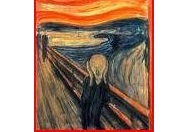
In a joint project with the group Distributed Systems and the Department of Psychiatry we created a system that helps schizophrenic patients and their families. [Emerencia et al., 2011-2015]
Classification of hyperspectral images

In a cooperation with the Fraunhofer Institute IFF, Magedburg/Germany, Prof. Udo Seiffert, we put forward and apply efficient methods for the classification of functional data, such as hyper-spectral images of organic samples. Appropriate dis-similarity measures and classifiers tailored to take advantage of the functional nature of the data are being devloped in the framework of a jointly supervised PhD thesis project, see [Melchert et al., 2015] for a first publication.
Integrity of boar acrosome spermatozoa
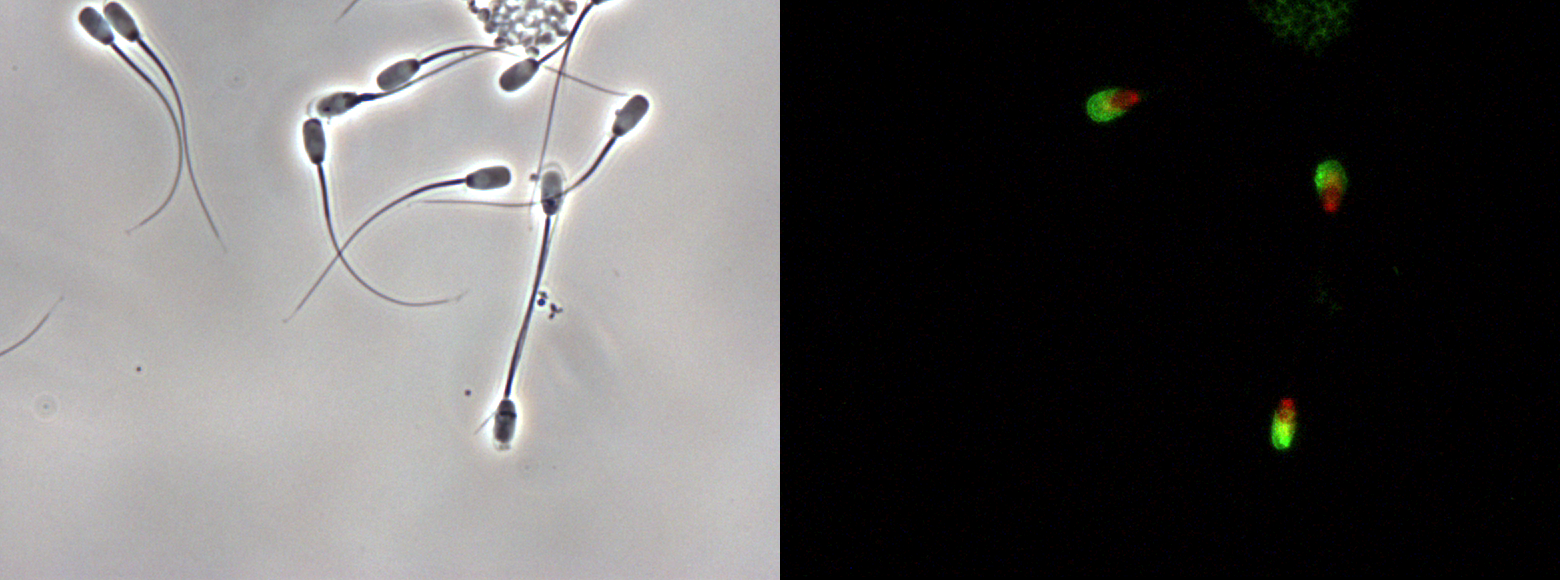
The integrity of the acrosome membrane is a valuable criteria to determine the quality of semen. The evaluation of the acrosome integrity is usually carried out visually, using staining techniques and expensive fluorescent microscopes. We perform an effective classification of boar spermatozoa using computer vision techniques on digital images taken on samples without staining through a standard phase-contrast microscope [Fernández-Robles et al. 2011].
Patient centered electronic health

In a collaboration with the eHealth Lab of the University of Cyprus we
develop computerised medical diagnostic systems integrating a
variety of intelligent systems techniques. These systems are aimed at
assisting clinicians in taking optimal diagnostic and treatment decisions.
Read more on [Schiza et al. 2015, 2015].
Assessment of the risk of stroke using ultrasound images of the carotid
We collaborate with researchers at the University of Cyprus on texture analysis for differentiating between asymptomatic and symptomatic plaques in ultrasound imaging of the carotid for the assessment of the risk of stroke.
Ornamentation detection in monophonic singing
A common technique for expressing emotions in music performance is the addition of short notes to the main melody. These notes are called ornamentations and can be arbitrarily or systematically inserted. We propose a novel filter-based algorithm for the automatic identification of ornamentations in singing folk music of Cyprus. It is adapted from the two-dimensional COSFIRE approach, which has been demonstrated to be effective in object localization and recognition in images. We created a data set of five Cypriot folk songs with total duration of 403 seconds containing 428 ornamentations. The COSFIRE filters are sensitive to amplitude tolerance, which is essential for non-stationary signals such as the singing voice. The proposed COSFIRE filters can be used for other applications such as note segmentation since they are able to capture note changes. The modeling of the pitch track with COSFIRE filters can also be used for the identification of repeating melodies.
Adaptive distance measures in machine learning

We aim at the development of efficient and interpretable systems for the analysis of complex data sets. Our main collaborators in this area are Prof. B. Hammer and Prof. T. Villmann. Distance-based methods for classification and relevance learning are in the center of our interest. There, a data-driven training process determines a suitable similarity measure and, in turn, provides important insight into the structure of the data set. As one particularly important example, we have developed Generalized Matrix Relevance Learning (GMLVQ) as a powerful prototype-based classifier. It employs one or several quadratic distance measures which assign weights to single features and pairs of features. GMLVQ and its extensions have been applied in a variety of practical classification problems. Read more (homepage M. Biehl). See here for a recent review.
The Statistical Physics of Learning (revisited)

The exchange of ideas between statistical physics and computer science has been very fruitful and is currently gaining momentum again as a consequence of the revived interest in neural networks, machine learning and inference in general. Statistical physics methods complement other approaches to the theoretical understanding of machine learning processes and inference in stochastic modeling. They facilitate, for instance, the study of dynamical and equilibrium properties of randomized training processes in model situations. At the same time, the approach inspires novel and efficient algorithms and facilitates interdisciplinary applications in a variety of scientific and technical disciplines.
We are currently applying the Statistical Physics approach in order to compute typical learning curves of prototype-based classifiers and layered neural networks for regression. In particular, we have considered continual 'life-long' learning under concept drift, most recently.
Read more (homepage M. Biehl). See here for a recent preprint.
